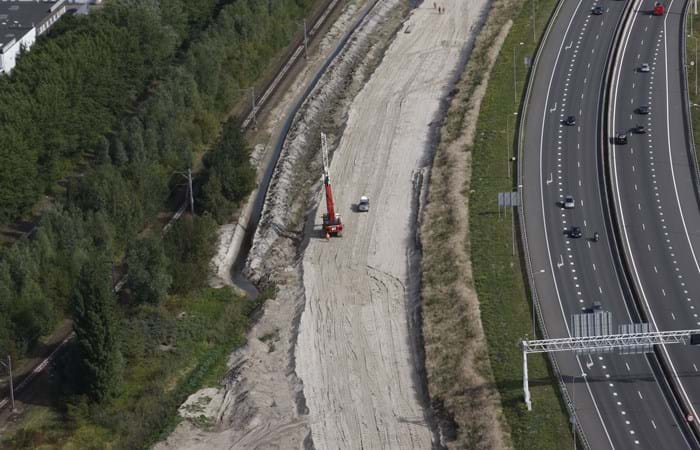Ground improvement for the line infra market often involves the treatment of the subsoil before the construction of the embankments. Which method to choose for highly depends on the soil conditions in relation to difference in ground level between before and after construction, strength of the subsoil and residual settlement requirements. Ground improvement works for large sites, like for example airport, can be performed as part of an integral solution, treating the complete construction site, but can also be limited to the treatment of specific areas, like the runways and aprons. Which method to choose highly depends on the soil conditions, in relation to difference in ground level between before and after construction. When the complete areas is raised on top of
When a fill is placed on top of compressible soils, the residual settlement requirements and stability of the embankment often governs the need and extend of the ground improvement. Consolidation techniques like vertical drains, together with a preload or vacuum preloading are the most common treatment methods all over the world. After preloading, the treated areas will show a reduction in post construction and differential settlements, resulting in longer maintenance cycles of the road or rail section. When strict settlement criteria are in place, the use of geotextile encased columns or other element techniques are an option to review. In some cases, when the compressible layers are superficial, a replacement method with compaction of the replaced material, or pounding of large diameter columns can also be an economical solution. This is all depending on the site-specific conditions and requirements. Do contact us for a review of your specific case.
In case of a site with granular material our compaction techniques like CDC (rapid impact compaction) or CRC (high energy impact compaction) are able to increase the bearing capacity and reduce liquefaction risks. The compaction can be performed on the complete site, but also on spot locations. Our surface compaction techniques are highly suitable for this kind of treatment, with depths of influence that fall right in the load distribution zone of the footings. In case of earthquake risks, additional methods like vibro compaction are available to densify the soil till greater depths.
For silty soils, that fall in-between the above mentioned situations, element solutions like stone columns are available to increase the safety against liquefaction and/or increase the bearing capacity.

